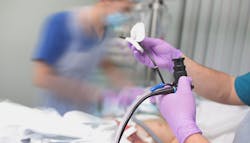Peer into any building contractor or mechanic’s garage, truck or van and you’ll likely see a version of the famed Fibber McGee closet from the 1930s-1940s radio show and movies (see https://www.youtube.com/watch?v=h9FGC68YcwM). In this YouTube link you’ll also likely notice a stairwell finial gag that Frank Capra picked up five years later for “It’s A Wonderful Life.”
To wit, contractors and mechanics tend to strew their ruddy and well-worn tools anywhere and everywhere, yet somehow manage to find what they need in the nick of time.
Surgeons in the operating room don’t enjoy that “luxury” because their tools tend to be brought to them, arranged orderly in sterile kits and trays.
One of my favorite scenes from the popular Netflix series, “The Crown,” which is based on Queen Elizabeth II’s life, occurs within a very early episode when King George VI is hunting ducks at one of the royal estates and instructing young son-in-law Prince Philip on the importance of Princess Elizabeth.
Oddly enough, the most memorable part of the scene wasn’t the impassioned dialogue but the process leading to the King’s hunting technique. To the left of the monarch, a royal aide handed him a loaded shotgun that he promptly aimed and fired. He then handed the spent weapon to a royal aide standing on his right for … ahem … reprocessing in a servant assembly line that likely would have pleased contemporary American automobile magnate Henry Ford across the pond.
Surgeons may feel similarly: They want their tools ready and waiting at a moment’s notice – before, even!
Sterile processing professionals harrumph because they know how challenging that demand is, particularly when soiled tools post-procedure finally are wheeled down for reprocessing long after the caked-on bioburden residue, inorganic material and organic tissue have solidified and hardened to a point requiring use of a hammer and chisel.
If only someone in the OR would have prepped the dirty devices and transported them for reprocessing once the procedure ended.
Effective in 2022, thanks to AAMI and ANSI, someone in the OR must do just that.
To make this “pre-cleaning” process more palatable, AAMI went so far as to rename the process as “pre-treating” to remove the perceived stigma of “cleaning” inside the OR by anyone other than Central Sterile Services or Environmental Services professionals.
My dad routinely advised me as a child, “you take care of your tools, and the tools will take care of you.”
Some in the OR may think it’s beneath them or not their job to pre-treat soiled surgical devices post-procedure. But AAMI guidelines now require it, which also is supported by AORN and HSPA, among others.
Most – if not all – healthcare organizations – from administrators to clinicians – likely recognize that pretreating devices and instruments quickly following a surgical procedure prevents any foreign and infectious bioburden or organic and inorganic materials from solidifying, drying and hardening on device surfaces. Without this crucial step, OR turnaround ultimately would be clogged and slowed, due in part to cleaning/decontamination process challenges, disinfection/sterilization failure, production/workflow hurdles and speedbumps and surgical scheduling delays from lack of device/instrument access and availability. (Remember that AORN, HSPA and APIC all endorse the mantra that if it’s not clean then it can’t be disinfected or sterilized.)
Of course, the patient safety issue lingers and looms all around this needlessly contentious issue.
In short, clinical science as well as occupational science logically justifies the prompt pre-treatment of surgical devices and instruments post-procedure. The surgical services version of NIMBY (Not In My Back Yard), a k a NIMOR (Not In My Operating Room), need not apply.
In the frontier days of yore, such insolence invited a trip to the tool shed.
Without the OR nurses and Central Sterile Processing’s cooperating, the surgeons likely will suffer what the beleaguered shopkeeper exclaimed in the early 1930s predecessor program to “Fibber McGhee and Molly” and be “Smackout” of what they need.
About the Author
Rick Dana Barlow
Senior Editor
Rick Dana Barlow is Senior Editor for Healthcare Purchasing News, an Endeavor Business Media publication. He can be reached at [email protected].

